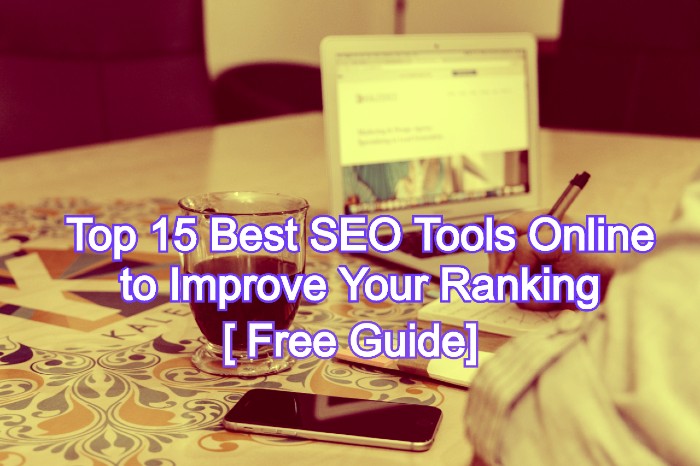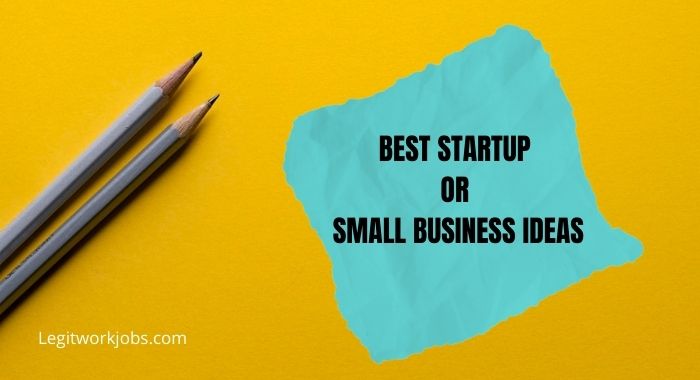Online Business Tips
Marketing & Sponsorship: A Guide to Boosting Your Brand Image and Sales
In today’s competitive market, businesses are always looking for innovative ways to differentiate themselves and boost their sales. One strategy that has gained popularity in recent years is sponsorship marketing. By supporting an event, organization, or individual, businesses can enhance their brand image and reach new audiences. In this guide, we’ll explore the benefits of sponsorship marketing, the types of sponsorship opportunities available, and how to use sponsorship marketing effectively to improve your brand image and boost sales.
What is Sponsorship Marketing?

Sponsorship marketing is a strategic approach that involves partnering with an event, organization, or individual to promote your brand. It can help businesses increase visibility, build credibility, and connect with their target audience.
However, choosing the right sponsorship is crucial to ensure maximum impact and return on investment. It’s important to consider factors such as budget, goals, and audience demographics when selecting a sponsorship opportunity. By aligning your brand with a relevant sponsor, you can enhance your reputation and attract new customers.
Whether it’s sports, arts, or charity events, sponsorship marketing can be a powerful tool to differentiate your business from competitors and increase brand awareness.
What are the 4 Types of Sponsorship? With Examples

Sponsorship is a strategic marketing tool that involves partnering with an event, organization, or individual to promote your brand. By aligning your brand with a relevant sponsor, you can increase visibility, credibility, and customer loyalty. However, there are various types of sponsorship, each with its own benefits and challenges. Here, we’ll explore the four main types of sponsorship and provide examples to help you understand which one might be the best fit for your business.
1. Sports Sponsorship
Sports sponsorship involves partnering with a sports team, athlete, or event to gain exposure and promote your brand. This type of sponsorship is popular among companies that want to reach a large audience of sports fans or associate their brand with specific values, such as teamwork, perseverance, or athleticism.
For example, Nike’s long-standing sponsorship of Michael Jordan helped the company become synonymous with basketball and urban culture. Similarly, Coca-Cola’s partnership with the Olympic Games allowed the brand to showcase its international appeal and celebrate human achievement.
2. Entertainment Sponsorship
Entertainment sponsorship involves associating your brand with music, films, or TV shows to enhance your image and reach a broader audience. This type of sponsorship is suitable for companies that want to tap into the emotional connection that people have with popular culture or endorse specific genres, artists, or styles.
For instance, Pepsi’s sponsorship of Beyoncé’s tours helped the company appeal to young and diverse audiences, while Apple’s integration in James Bond movies showcased the brand’s innovation and sophistication.
3. Cause-Related Sponsorship
Cause-related sponsorship focuses on supporting a social or environmental cause that aligns with your brand values. This type of sponsorship is suitable for companies that want to demonstrate their commitment to making a positive impact on society or align their brand with a specific mission or issue.
For example, P&G’s sponsorship of the Olympics’ “Thank You Mom” campaign celebrated the role of mothers in raising champions and promoting diversity and inclusion. Similarly, TOMS’ “One for One” initiative donated a pair of shoes to a child in need for every pair purchased, which helped the company build a loyal and socially conscious customer base.
4. Art Sponsorship
Art sponsorship involves supporting artists, museums, galleries, or cultural events to showcase your brand’s creativity and sophistication. This type of sponsorship is suitable for companies that want to differentiate themselves from competitors and appeal to a sophisticated and affluent audience.
For instance, BMW’s sponsorship of the Guggenheim Museum allowed the company to showcase its design and engineering prowess and attract art and design enthusiasts. Similarly, Louis Vuitton’s collaboration with artist Jeff Koons created a buzz among art collectors and fashion connoisseurs and reinforced the brand’s artistic and innovative image.
Benefits of Sponsorship Marketing

ponsorship marketing is a strategic approach that involves partnering with an event, organization, or individual to promote your brand. This type of marketing can offer various benefits for businesses of all sizes, from increasing brand awareness to building customer loyalty. Here, we’ll explore the top benefits of sponsorship marketing and explain why it’s a valuable investment for your business.
1. Increased Brand Awareness One of the primary benefits of sponsorship marketing is the increased brand awareness it generates. By associating your brand with a relevant sponsor, you can reach a larger audience and enhance your visibility. For example, sponsoring a major sports team or event can expose your brand to millions of fans and viewers worldwide. Similarly, sponsoring a charity event or a cultural festival can help you reach a diverse and engaged audience and showcase your brand’s values and personality.
2. Enhanced Brand Credibility Another benefit of sponsorship marketing is the enhanced brand credibility it can provide. By aligning your brand with a trusted and respected sponsor, you can reinforce your brand’s reputation and credibility. For instance, sponsoring a well-known charity or a social cause can demonstrate your brand’s commitment to social responsibility and ethical practices. Similarly, sponsoring a top-rated TV show or a music festival can enhance your brand’s coolness and relevance among younger audiences.
3. Improved Customer Engagement Sponsorship marketing can also improve customer engagement and loyalty. By creating memorable and authentic experiences for your customers, you can build stronger relationships and increase customer retention. For example, sponsoring an exclusive VIP event or a meet-and-greet session with a celebrity can reward your loyal customers and generate positive word-of-mouth. Similarly, sponsoring a social media contest or a photo booth can encourage your customers to interact with your brand and share their experiences with their followers.
4. Increased Sales and Revenue Finally, sponsorship marketing can lead to increased sales and revenue. By leveraging the exposure and credibility you gain from your sponsorship, you can attract new customers and increase your market share. For instance, sponsoring a product placement in a blockbuster movie or a popular TV show can create a surge in demand and drive sales. Similarly, sponsoring a product launch event or a trade show can allow you to showcase your products or services to potential buyers and generate leads.
How to Add Sponsorship to Your Marketing Plan

Sponsorship marketing can be a powerful way to reach new audiences, build brand awareness, and establish credibility. However, it can be challenging to integrate sponsorship into your marketing plan effectively. In this guide, we’ll outline the key steps you need to take to add sponsorship to your marketing plan and maximize its impact.
1. Identify Your Objectives
The first step to adding sponsorship to your marketing plan is to identify your objectives. What do you want to achieve through sponsorship? Are you looking to increase brand awareness, enhance brand credibility, generate leads, or boost sales? Defining your goals will help you choose the right sponsorship opportunities and measure the success of your efforts.
2. Define Your Target Audience
The next step is to define your target audience. Who do you want to reach through sponsorship? What are their interests, values, and behaviors? Understanding your audience will help you choose the right sponsorships and tailor your messaging and activities to resonate with them.
3. Research Sponsorship Opportunities
Once you’ve defined your objectives and target audience, it’s time to research sponsorship opportunities. Look for events, organizations, or individuals that align with your brand values, target audience, and marketing goals. Consider factors such as audience demographics, reach, and engagement, as well as the cost and benefits of each opportunity.
4. Develop a Sponsorship Strategy
Based on your research, develop a sponsorship strategy that outlines your approach, goals, budget, and metrics. Define the sponsorship activation plan, including the messaging, activities, and assets you’ll use to leverage your sponsorship. Determine the ROI metrics you’ll use to evaluate the success of your sponsorship and adjust your strategy accordingly.
5. Negotiate and Secure Sponsorship
Once you’ve identified the right sponsorship opportunity and developed a strategy, it’s time to negotiate and secure the sponsorship. Work with the sponsor to define the terms of the sponsorship, including the duration, benefits, and obligations of each party. Ensure that the sponsorship agreement is legally binding and protects your brand’s interests.
6. Leverage Your Sponsorship
The final step is to leverage your sponsorship to achieve your marketing goals. Use your sponsorship assets, such as logos, signage, and branding, to increase your visibility and reinforce your brand’s messaging. Engage with the audience through activations such as contests, giveaways, or exclusive events. Monitor and measure the impact of your sponsorship, and adjust your strategy accordingly to maximize its value.
Conclusion:
Sponsorship marketing is a powerful strategy for businesses looking to enhance their brand image and boost their sales. By sponsoring an event or organization that aligns with their values and target audience, businesses can differentiate themselves from their competitors and reach new audiences. With the right approach, sponsorship marketing can help businesses build long-term relationships with customers and establish themselves as a trusted brand in their industry. By following the tips and strategies outlined in this guide, businesses can effectively leverage sponsorship marketing to achieve their marketing objectives and drive business growth.

 Blog1 year ago
Blog1 year ago50 Highest Paying Affiliate Programs to Earn Crazy Commission in 2023

 Blog1 year ago
Blog1 year ago8 Best Bulk and Mass Emails Software for Email Blast

 Blog2 years ago
Blog2 years agoWhat is Guest Blogging? And Why it’s Important for Your Blog

 Online Job1 year ago
Online Job1 year ago30 Legitimate Work from Home Jobs with No Startup Fee in 2023

 Blog3 years ago
Blog3 years agoTop 15 Best SEO Tools Online to Sky-Rocket Your Productivity in 2023

 Online Business Tips2 years ago
Online Business Tips2 years ago35 Best Startup and Small Business Ideas in 2022

 Blog2 years ago
Blog2 years ago10 Best Places to Design and Sell T-Shirts Online and Make Money

 Entertainment1 year ago
Entertainment1 year agoGet to Know Yeh Rishta Kya Kehlata Hai Star Shivangi Joshi’s Net Worth









